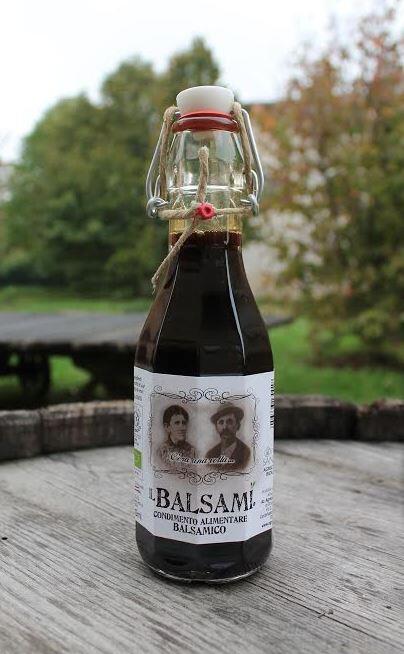Balsamic vinegar is a staple in many kitchens, prized for its rich, complex flavor that can elevate a wide variety of dishes. However, with its popularity comes a fair share of misconceptions. Understanding the truth behind these myths is essential for anyone who wants to enjoy the true benefits of balsamic vinegar. Below, we debunk ten common myths about balsamic vinegar and provide the facts you need to make informed choices.

1. Myth: All Balsamic Vinegar is the Same
Fact: There are significant differences between traditional balsamic vinegar (Aceto Balsamico Tradizionale) and commercial balsamic vinegar. Traditional balsamic vinegar is made purely from grape must and aged for a minimum of 12 years in wooden barrels, following strict production methods in Modena or Reggio Emilia. On the other hand, commercial balsamic vinegar often includes additives like caramel coloring, thickeners, and wine vinegar, with aging periods as short as two months (Mortadella Head) (The Spruce Eats).
2. Myth: The Darker and Thicker the Vinegar, the Better the Quality
Fact: The dark color and thick consistency of balsamic vinegar can be deceiving. While these characteristics often indicate a well-aged traditional balsamic vinegar, they can also result from the addition of caramel color and thickeners in cheaper, commercial varieties. To ensure quality, look for labels like DOP (Denominazione di Origine Protetta) or IGP (Indicazione Geografica Protetta) (Tasting Table) (Serious Eats).
3. Myth: Balsamic Vinegar Should Be Used Generously Like Other Vinegars
Fact: Traditional balsamic vinegar is rich and concentrated, meant to be used sparingly as a finishing touch rather than as a cooking ingredient. Overusing it or applying it during cooking can overwhelm dishes and waste its nuanced flavors. Instead, use it as a drizzle over fruits, cheese, or even desserts like vanilla ice cream (MiaBella Foods).
4. Myth: Balsamic Vinegar is Just for Salad Dressings
Fact: While balsamic vinegar is excellent in salad dressings, its uses extend far beyond. It can be drizzled over roasted vegetables, used to enhance grilled meats, or even paired with strawberries or parmesan cheese. Its versatility makes it a gourmet condiment suitable for various dishes (The Spruce Eats) (Allrecipes).
5. Myth: All Balsamic Vinegar Comes from Modena
Fact: While the best traditional balsamic vinegars do come from Modena and Reggio Emilia, commercial versions can be produced elsewhere and often don’t adhere to the same standards. Always check the label for geographical indicators like DOP or IGP to verify the origin and authenticity of the vinegar (Curly Tales).
6. Myth: The Price of Balsamic Vinegar Always Reflects Its Quality
Fact: Although higher prices often indicate better quality, especially for traditional balsamic vinegars, this isn’t always the case. Some commercial balsamic vinegars are overpriced despite being mass-produced with additives. Look for DOP or IGP labels to ensure you’re getting authentic balsamic vinegar (Serious Eats) (The Spruce Eats).
7. Myth: Balsamic Vinegar Should Be Refrigerated
Fact: Balsamic vinegar, particularly traditional varieties, should not be refrigerated. Refrigeration can alter its flavor and texture. Instead, store it in a cool, dark place to maintain its quality (Allrecipes).
8. Myth: All Balsamic Vinegar is Aged for Many Years
Fact: Only traditional balsamic vinegar is aged for 12 years or more in wooden barrels. Commercial varieties may be aged for as little as two months. The aging process significantly affects the flavor, with traditional balsamic offering a richer, more complex taste (The Spruce Eats) (Allrecipes).
9. Myth: Balsamic Vinegar is Always Sweet
Fact: While traditional balsamic vinegar has a balanced sweet and sour flavor, not all balsamic vinegars are sweet. Commercial varieties often include added sweeteners, which can make them taste overly sweet. In contrast, authentic traditional balsamic has a nuanced flavor profile that balances sweetness with acidity (Serious Eats).
10. Myth: Balsamic Vinegar is Only Good for Salads
Fact: Balsamic vinegar is incredibly versatile and can be used in a wide range of dishes, from savory to sweet. It pairs well with meats, vegetables, cheeses, and even desserts like strawberries or vanilla ice cream. Its rich flavor can enhance many recipes beyond just salads (Allrecipes) (Allrecipes).
Conclusion
Understanding the facts behind these common myths can help you appreciate the true value of balsamic vinegar. Whether you’re drizzling it over fresh strawberries or using it to enhance the flavor of a savory dish, knowing the difference between traditional and commercial balsamic vinegar ensures that you’re making the best choice for your culinary needs. Always look for authentic products with DOP or IGP labels, store them correctly, and use them thoughtfully to fully enjoy their rich, complex flavors.
For more detailed information, you can visit the sources:

